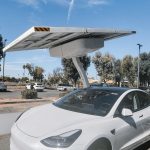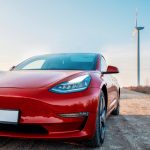Consumers have watched automated home cleaning devices become mainstream, with the Roomba brand often cited as the category leader. However, iRobot’s latest financial data paints a different picture for the sector’s pioneer. The company reported significant declines in revenue for the third quarter of 2025, signaling that even established technological brands encounter major hurdles in sustaining market momentum. Product launches such as the Roomba Max 705 Combo have attracted interest, but the company’s ongoing production setbacks and shipping disruptions show that challenges are multidimensional.
Earlier reports highlighted iRobot’s consistent financial stress, but the extent of revenue decline and the stark warning about possible bankruptcy protection mark a new level of concern. Previous years’ commentary focused on market competition and the failed Amazon acquisition, yet recent disclosures suggest the company’s liquidity has grown more pressing. Past coverage of workforce reductions and shelved projects hinted at instability, but the latest filings emphasize immediate threats to day-to-day operations. The shift in tone from strategic recalibration to survival underscores a critical juncture for iRobot.
What Caused iRobot’s Ongoing Decline?
The decline in revenue—down 24.6% from the same quarter last year—continues a trend that has spanned several consecutive quarters. Regional breakdowns reveal the sharpest fall in the U.S. market at 33%, with more moderate decreases of 13% in EMEA and 9% in Japan. Adjusted for currency fluctuation, EMEA saw a 14% fall, while Japan’s figures held steady. CEO Gary Cohen linked these results primarily to supply chain interruptions and weakened consumer demand.
“Our third-quarter revenue fell well below our internal expectations due to continuing market headwinds, ongoing production delays, and unforeseen shipping disruptions,”
Cohen stated, pointing to concerns over the firm’s ability to balance costs against falling sales.
How Critical Is iRobot’s Financial Position?
With only $24.8 million in available cash by late September—down from $40.6 million three months prior—the company acknowledges that its funding options are severely limited. A recent filing expressed doubt about iRobot’s continued viability unless new capital is secured. The report indicated,
“If we can’t obtain new capital in the near term, we may be forced to significantly curtail or cease operations and would likely seek bankruptcy protection.”
These financial pressures mirror the company’s shrinking sales footprint, especially as sales from mid-tier and premium robots now represent a smaller proportion of overall revenues compared to last year.
What Do iRobot’s Struggles Mean for the Broader Market?
The trajectory of iRobot offers insight into larger trends in consumer robotics. The firm’s early status as an industry innovator with products like the Roomba Max 705 Combo gave way to fragmentation as rivals introduced competing devices. Attempts to diversify, including a long-delayed robot lawn mower project, have not eased financial headwinds. Broader economic factors and tighter regulatory scrutiny—such as those affecting the planned Amazon acquisition—have further strained the company’s prospects. Repeated layoffs and leadership changes, including the exit of co-founder Colin Angle, mark ongoing efforts to realign the business, but decisive results remain elusive.
Stakeholders monitoring iRobot’s situation gain a cautionary example of how innovation alone does not guarantee long-term business resilience. The recent filings make clear that, without outside investment, the company may need to make significant operational cuts or enter bankruptcy proceedings. For consumers and investors, this underscores the importance of evaluating not just product innovation but also the underlying financial health and adaptability of firms in fast-evolving sectors. Monitoring iRobot’s steps in the coming months could provide valuable lessons about navigating intense competition and responding to global market disruptions in the robotics industry.
- iRobot’s Q3 2025 revenue dropped 24.6% year over year.
- The company’s financial outlook is threatened by limited access to new capital.
- Broader competition and shrinking cash reserves heighten bankruptcy risk.










